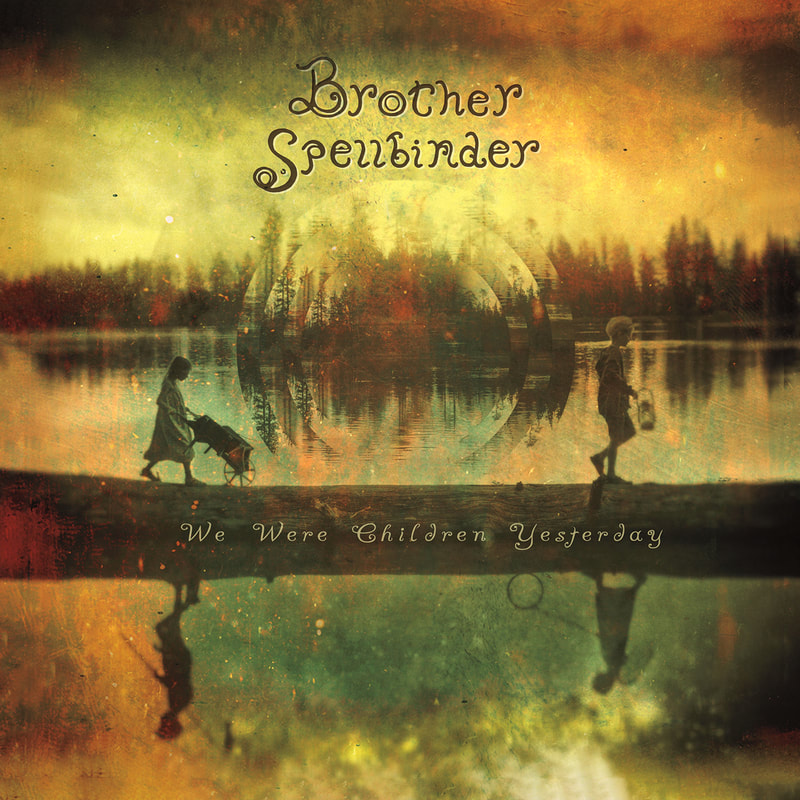
Some people say that music runs in the family. Since five of five members of my family have or had some sort of connection to music in some way, I can attest to that. And the same can be said for Alzara Getz, the woman behind the San Francisco-based Chamber Pop band known as Brother Spellbinder. Alzara’s music connection came by way of her father, Dave Getz, a drummer who played in the band Big Brother & The Holding Company, the same band that would back Janis Joplin up back when she was still alive. And while Dave Getz has been a drummer, his daughter Alzara Getz is the bandleader of the San Francisco ensemble known as Brother Spellbinder.
Brother Spellbinder is a musical collective made up of Alzara Getz on Uke, vocals, harmonica; Jamie Wilson on guitar, vocals; Steve La Porta on drums, percussion; Sean Griffin on Electric Guitar; Helena Tietze on Cello & Vocals; Steve Bollhoefer on violin, mandolin, vocals, tap dancing; Gabriel Beistline on Cello; and Dale Carlson on saxophone, flute, harmonica, pennywhistle. This band blends together so many different genres and musical influences that it’s slightly difficult to narrow down the band’s sound. However, you can find sounds such as Americana, Classical, Swing and some Eastern European influences. It is this musical blend that can be found on the band’s new seven-song EP can We Were Children Yesterday.
We Were Children Yesterday from Brother Spellbinder begins with the track “Birds of a Feather”. The track begins with the sound of handclaps as they set up a beat for the track. It is the sound of Alzara Getz on Ukulele that begins the music. Soon, the song “Birds of a Feather” begins as it contains a slow, easy feel to the music with Folk influences, Rock influences and some Classical influences. The result is a track that mainly feels like a Folk-Rock track but with a dated feel to the music, taking it back in time to another time. The Classical feel from the strings truly brings out that Other-timely feel to the music. With the unique quality in the vocals from Getz, that Other-timely feel is even further reinforced.
As the next track of “Mandalay” begins, there is the sound of the mandolin and the aforementioned strings. With those instruments, the song feels very much orchestrated. The track is arranged in such a way to provoke a vision of a scene in a Hollywood movie. The vocals from Alzara Getz adds to that vision. The rather short track that lasts for less than two minutes could easily have found its way into a movie in the late forties/early fifties.
The first few moments of the track “Aching Eyes” once again provoke the vision of a movie soundtrack as the harmonica and acoustic guitar play out a tune very reminiscent of scores from Ennio Morricone of Spaghetti Western music fame. Soon, that music changes directions and what it is replaced with is a musical blend that features a strong Folk feel to the music with a light beat to it. The track features the violin from Steve Bollhoefer. That violin and Folk music mix creates a track with a strong Gypsy feel to the track. The track is also rather reminiscent of the Lounge music revival that took place back in the nineties where bands like Novelle Vague and Combustible Edison were creating music outside of the normal spectrum of Pop music at that time. “Aching Eyes” from Brother Spellbinder is a track that would have fit right in with music at that time.
With the next track, Brother Spellbinder creates a track that takes some of the flavor from “Aching Eyes” and mixes it with some influences from a band such as the Squirrel Nut Zippers. It is on the track called “Woman” that the music consists of a blend of Jazz, Folk and some Rock and Roll influence in the form of the electric guitar courtesy of Sean Griffin. The track features a strong Jazz backbone but also has a strong Rock and Roll feel to it at the same time. There even seems to be a slight hint of “Hell” from the Squirrel Nut Zippers in the track. The strong male and female vocals on the track add even more flavor to the track. “Woman” has perhaps the most unique feel to its music of any track on the We Were Children Yesterday release. The track changes directions many times during its playtime of less than three minutes.
While most of the We Were Children Yesterday release from Brother Spellbinder consists of original tunes, the band changes directions for one song. Brother Spellbinder slows thing down on the track “Red River Valley”. For those familiar with that title, this is the same song made popular by many different artists such as The Mills Brothers, Woody Guthrie, and many others. Brother Spellbinder takes their turn at the song. With the Old Timey feel that exists within the music of the band, “Red River Valley” seems ready-made for Brother Spellbinder. The band takes some Old-time Blues influence, adds some Swing influence and some Folk influence to create their version. The band’s version feels both dated and fresh at the same time. This version of the well-known song fits well with those versions that have already come before.
Brother Spellbinder brings their new EP of We Were Children Yesterday to a close with the track “20 Years Ago – The Full Version”. With this track, the band strips things down to just a simple guitar and Alzara Getz’s vocals. This creates a very personal moment on the EP as the listener gets rather up close because of the simplicity of the track. And while there is only the guitar and vocals on the track, the song does is far from dull. While Getz sings the verses of the track, the band joins in as they add just their vocals to the track. The addition of the band’s vocals adds depth to a track that would otherwise be rather sparse in nature. The easy feel and uncomplicated approach to the music makes “20 Years Ago – The Full Version” the perfect track to bring the album to a close.
As you make your way through the We Were Children Yesterday EP from Brother Spellbinder, you encounter many different musical approaches within the EP’s seven tracks. Some of the tracks have Folky approaches, some have stronger Rock-flavored approaches, and some are simply different. This is the type of release that is nice to find from time-to-time as it feels different from anything else out there. We Were Children Yesterday EP from Brother Spellbinder is strong from the very first song and needs to be heard straight through.
For more information, check out Brother Spellbinder’s PR firm, Whiplash/ Whizkid Management by clicking on the logo.

To hear some of We Were Children Yesterday EP from Brother Spellbinder, check out the band’s current single of “Birds of a Feather“.
To check out the entire album, click on the link below.


 Austin, Texas-based singer-songwriter Mark DiLillo was once on his way to having a degree as a biology major. That was before his college roommate showed him the ways of Ableton computer software. With the help of that software, DiLillo’s path changed. Soon, instead of helping animals in need, DiLillo was creating music on the computer.
Austin, Texas-based singer-songwriter Mark DiLillo was once on his way to having a degree as a biology major. That was before his college roommate showed him the ways of Ableton computer software. With the help of that software, DiLillo’s path changed. Soon, instead of helping animals in need, DiLillo was creating music on the computer.
